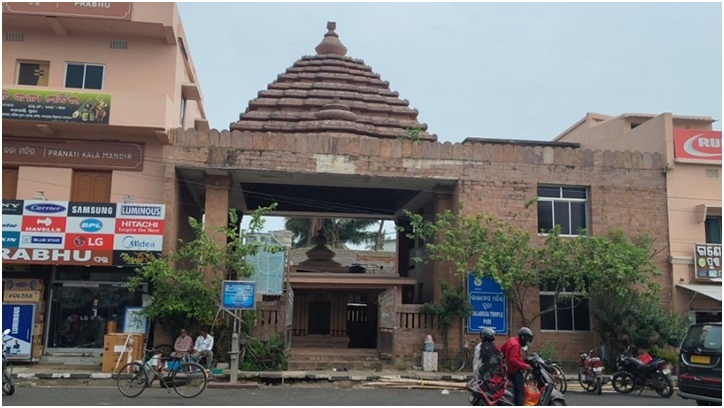Rath Yatra 2025: When Lord Jagannath's Chariot Halts For His Muslim Devotee Salabega In Puri

An ardent devotee of Mahaprabhu Jagannath, 'Bhakta Kabi' Salabega, as he is known, surrendered before the Lord in such a way that his love knew no boundaries of caste, birth or religion. Despite the fact that he was a Muslim, his devotion gave birth to one of the most touching traditions of the Jagannath culture that is observed even today with all sincerity. During the Rath Yatra, Lord Jagannath's Nandighosha chariot pauses for a while at his samadhi pitha (peeth) as a mark of respect for the 17th-century saint-poet.
The Story Of Salabega
According to a legend, Salabega, hailed as one of the greatest devotees of Mahaprabhu Jagannath, was the son of Mughal Subedar Mirza Lalbeg and a Hindu Brahmin woman. Even though he born into a Muslim family, Salabega was deeply influenced by his mother's faith and grew devoted to Lord Jagannath after a near-death experience in a battle.
He had sustained severe injuries and possibility of recuperation was dim despite various treatments. When medical aid failed, he turned to his mother, who asked him to pray to Lord Jagannath. Trusting his mother, Salabega prayed earnestly to Mahaprabhu. He then dreamt of a divine figure healing his wounds, and soon, he started to recover. He believed it was the grace of Mahaprabhu. That moment changed Salabega's life forever.
After the divine experience that he witnessed, Salabega gave up everything and dedicated his entire life to the worship of Lord Jagannath, and composed countless devotional hymns that are sung in Odia households even today. Some of the popular bhajans composed by him include 'Ahe Nila Saila', 'Eka To Bhakta JIbana', and 'Chali Chalija Nilagiri Kalia'.
When Mahaprabhu Waited For His Devotee
One of the most cherished stories associated with Salabega hints at the bond that grew between him and Lord Jagannath. Once, while returning from Vrindavan to attend the Rath Yatra in Puri, Salabega was delayed owing to heavy rains. As he remained stranded far from the pilgrim town, he prayed to Mahaprabhu, wishing that the chariot doesn't move until he arrived.
What followed was a miracle. While rolling on Badadanda (Grand Road) towards Gundicha, the chariot of Lord Jagannath stopped near Balagandi and didn't move despite all force by temple servitors. It was only after Salabega arrived at the place that the chariot started to move again. A shrine, known as Salabega temple, stands at that very place now, and the chariot of Mahaprabhu still halts every year so that the Lord gets to meet His revered devotee.
Since Salabega was not allowed inside the Jagannath temple due to his faith, he worshipped the Lord from outside, visiting Srimandir daily and participating in the Rath Yatra every year. After his demise in 1664, the then Gajapati Maharaja ordered that Salabega be buried near Bada Danda in Balagandi as a gesture of respect for the Muslim devotee. His samadhi was later known as Salabega temple.
Even today, flowers, incense and fruits are offered daily at his Samadhi Peeth. "Every day, people come to Puri not just to worship Lord Jagannath and His siblings, but also pay obeisance to Lord's devotee Salabega. This is what makes Jagannath culture very unique. Here, faith matters more than one's identity," says Deepak Kumar Satpathi, a local devotee.
A Message Of Brotherhood
Ali Babu, a Muslim from Puri's Kumbarapada region, says, "For us, it's a matter of great pride that a Muslim devotee has been honoured with a temple. Salabega's life and legacy give a strong message of communal harmony. People of all religions come here to offer prayers."
For Sarat Mohanty, a senior servitor of Srimandir, "Salabega serves an example of how Mahaprabhu Jagannath accepts all His devotees who approach him with a pure heart. The Lord himself stopped his journey waiting for his devotee. This is Jagannath culture, where only heart and love matters, not anyone's background."

